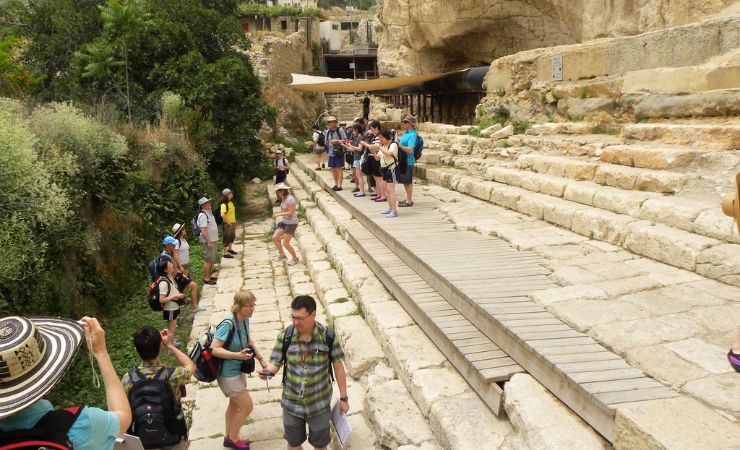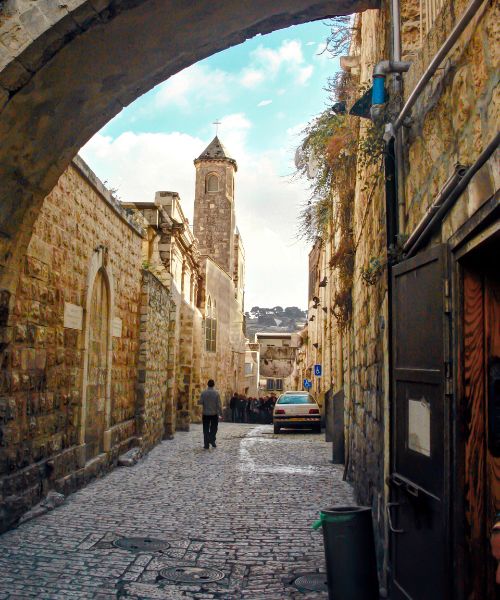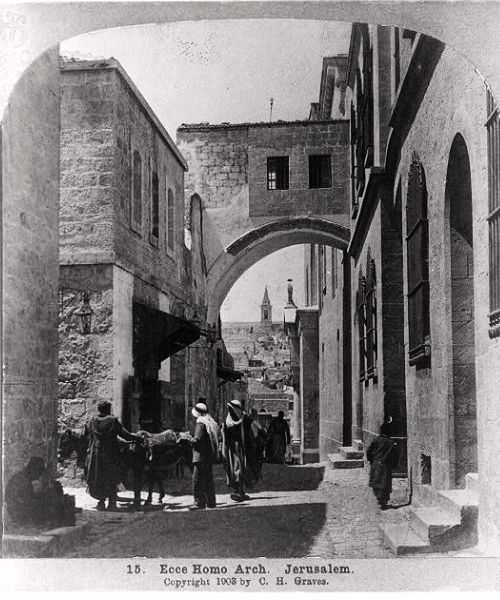The Pool of Siloam: An Important Location from the Times of Both Temples
Introduction
The Siloam Pool, located on the southern slope of the Wadi Hilweh, this pool has been a focal point of archaeological studies and religious pilgrimages for centuries.

Credit Ian Scott, CC BY-SA 2.0, via Wikimedia Commons
Location
The Siloam Pool is situated on the southern slope of the Wadi Hilweh, considered by some archaeologists to be the original site of Jerusalem. The pool is located outside the walls of the Old City to the southeast. The pools were fed by the waters of the Gihon Spring, carried there by the Siloam Tunnel.
During the time of the First Temple
The history of the Siloam Pool is deeply intertwined with the religious and political events of the time. The pool was built during the reign of King Hezekiah (end of the 8th century BCE) to ensure that besieging armies would not have access to the spring’s waters. The pool was fed by the newly constructed Siloam tunnel, replacing an older Canaanite tunnel that had been vulnerable to attackers1.
The rest of the events in Hezekiah’s reign, including the extent of his power and how he built a pool and dug a tunnel to bring water into the city, are recorded in The Book of the History of the Kings of Judah.
During the time of the Second Temple
During the Second Temple period, the Pool of Siloam was centrally located in the Jerusalem suburb of Acra, also known as the Lower City. The pool was used by pilgrims for ritual purification before visiting the Temple. The Pilgrim’s Road is now being excavated and extends between the Pool of Siloam and the Western Wall near the top of the Temple Mount. According to the Gospel of John, it was at the Siloam Pool where Jesus healed a blind man.
When he had said this, he spat on the ground, made some mud with the saliva, and put it on the man’s eyes. ‘Go,’ he told him, ‘wash in the Pool of Siloam’ (this word means ‘Sent’). So the man went and washed, and came home seeing.
The pool was destroyed and covered after the First Jewish–Roman War in the year 70 CE. In the years following the destruction, winter rains washed alluvium from the hills down to the valley and down the slopes of Mount Zion to the west of the pool; the pool was filled with silt layers (up to 4 m in some places) until it was covered completely.
This pool was rediscovered in the autumn of 2004 during excavation work for a sewer. The discovery of stone steps during the excavation led the archaeologists to believe that these were part of the Second Temple period pool. This hypothesis was confirmed through further excavations, and the find was formally announced on August 9, 2005.
The excavations revealed that the pool was 225 feet (69 meters) wide and had steps on at least three sides. The pool is not perfectly rectangular, but a soft trapezoid. There are three sets of five steps, two leading to a platform, before the bottom is reached. It is suggested that the steps were designed to accommodate various water levels. The pool is stone-lined, but underneath, there is evidence of an earlier version that was merely plastered to help it retain water. Coins from the reign of Alexander Jannaeus were found embedded in the plaster lining of the pool, providing a secure earliest date for the pool’s (re-)construction.



The "wrong" Pool of Siloam
The exact location of the original pool as it existed during the time of Jesus remained a mystery until June 2004 when the stepped remains of the ancient Siloam Pool were uncovered near the City of David. The discovery of the Second Temple period pool clarified the historical and geographical context, revealing that the Byzantine pool was a later construction.
Until that time, a different pool, constructed in the 5th century, was built by the Byzantine empress Eudocia was thought to be the one commemorating the miracle of Jesus healing the blind man, as recounted in the New Testament.
This pool is significantly smaller than the original Pool of Siloam from the Second Temple period and is located about 70 yards (64 meters) from it.
Full excavation underway (2023)
In January of 2023, the Israeli Antiquity Authority announced plans to excavate the entire pool. The excavation project was initiated after a change in property ownership, which allowed for the first comprehensive excavation of the pool in over 2,000 years.
The excavation process involves removing modern debris to reveal the ancient structures beneath. The excavation is expected to reveal not only remnants from the Second Temple Period but also potentially from the First Temple Period.
One of the intriguing questions Orenstein raises is whether they will find remnants of the original Pool of Siloam, constructed during the reign of King Hezekiah, beneath the pool dating back to Herod’s time. This would require digging beneath the Herodian pool, a decision that will be made by the Israel Antiquities Authority.
The entire excavation process is expected to take about five years. Excavation of the pool is done in conjunction with the Pilgrimage Road.
Additional Sources:
Wikipedia – Pool of Siloam
Where Is the Original Siloam Pool from the Bible? – Biblical Archaeology Society
THE POOLS OF SILOAM – Tyndale Bulletin (PDF)
The Amstrong Institute – Excavating the Pool of Siloam
Nearby Sites
- City of David: An archaeological site that is known to be the original urban core of ancient Jerusalem. It was here that King David established his capital and where the history of Jerusalem as the capital of the Jewish people began.
- Hezekiah’s Tunnel: This is an impressive ancient water tunnel from the 8th century BCE that was carved under the City of David in Jerusalem.
- Dung Gate: The Dung Gate is one of the Gates of the Old City of Jerusalem.
- Jerusalem Archaeological Park: An fascinating archeological park close to the Dung Gate. Direct access from the Pool of Siloam through the underground Roman drainage system.
- The Western Wall: A revered Jewish site, being the last remnant of the Second Jewish Temple and a place of prayer and pilgrimage for centuries.
- King David’s Tomb: King David’s Tomb is a site traditionally believed to be the burial place of David, the second king of the United Kingdom of Israel and Judah, located on Mount Zion in Jerusalem.



